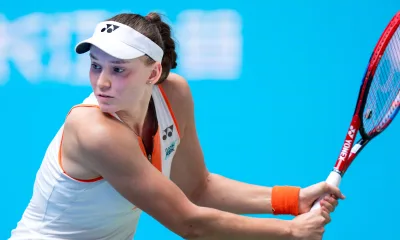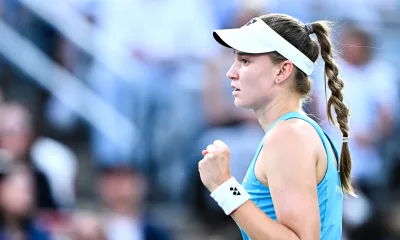Grand Slam US Open WTA
Measured Alexandrova aims to turn Miami upset into US Open breakthrough
Alexandrova’s Miami win over Swiatek and steadier approach give her US Open upset potential in 2025.
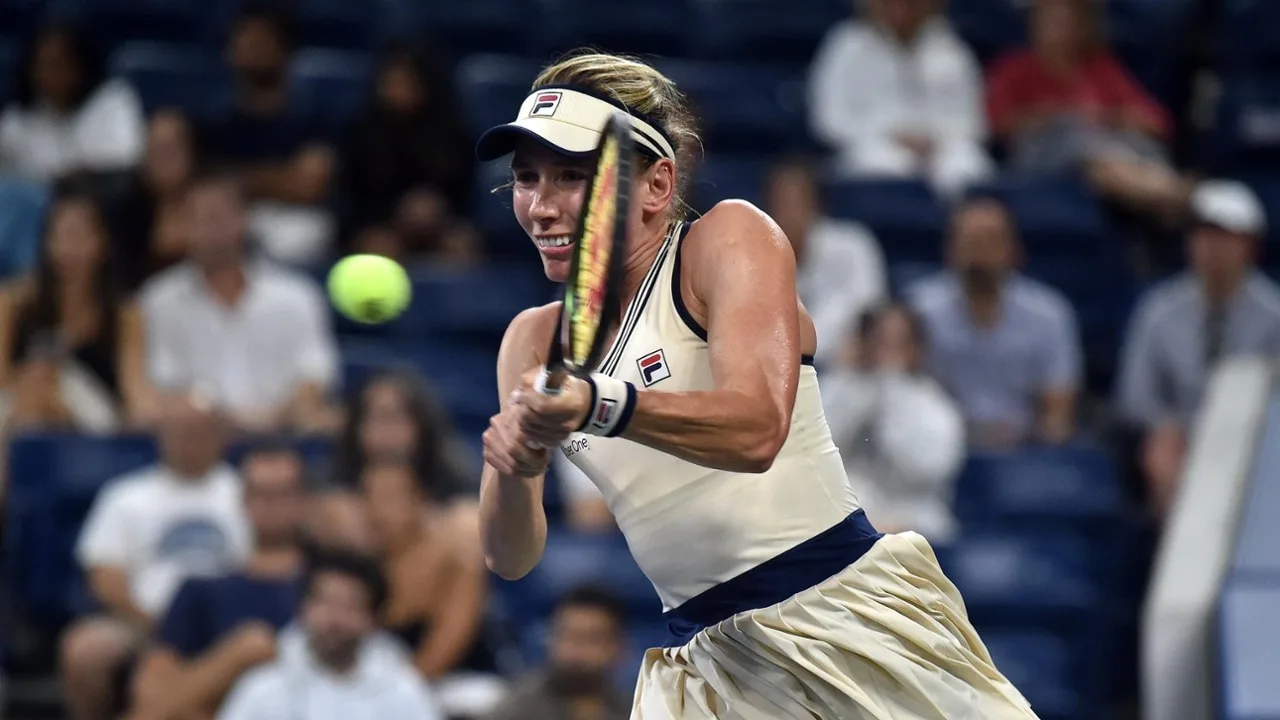
Ekaterina Alexandrova arrives at the US Open with a recent résumé that forces attention: the No. 13 seed owns a two-set, sub-90-minute win over Iga Swiatek in Miami last year and has settled into firmer Grand Slam form.
“I remember just going on the court basically without any plan,” she told me of a particular match last spring. “I was trying to play super aggressively and that night, especially at that tournament, everything was going inside the court. I basically didn’t think too much on the court, I just enjoyed the moment.” That night produced 31 winners and the biggest win of her career.
Alexandrova has mixed moments—she surrendered a lead of 11 match points earlier this summer in ’s-Hertogenbosch—but the 30-year-old has pushed past a stubborn Grand Slam barrier. “After a couple of these big tournaments, it’s getting easier,” sighed Alexandrova, fresh off a 6-0, 6-1 win over Laura Siegemund. “Before, I could win two matches and in the third, there was this feeling that maybe this would be the time I could finally win that third match in a row, but it wasn’t happening. Then you go to the next tournament, win two matches again and the third round gets stuck in your head because you’re always losing in the third! You don’t want to repeat that and you repeat it anyway.
“But once I won three matches in one tournament, it was like I pushed that barrier and made that step. In my mind, it was like something clicked and it’s not my problem anymore, so I’m able to keep playing.”
She has also adjusted how she constructs points. I’m trying to play more conservatively in some moments so I can better prepare my shots. It’s not like it used to be where, the first opportunity I would have, I’d hit super hard no matter what is going on on the court. Now, I’m trying to make better shot selections, even if it means keeping the rally going long. I’m able to wait for better opportunities to hit the shot. I think it’s working that much better than hitting everything and going for every single one, just hoping for the best! Ekaterina Alexandrova
That measured approach helped her close a 60-minute victory over Siegemund and could be crucial against Swiatek, who won their most recent meeting on grass in Bad Homburg and who rallied from 1-5 down in the first set of her third-round match in New York. Alexandrova flew to Flushing Meadows after a runner-up finish at the Abierto GNP Seguros and is trying to make the most of her time in the city. “We spend almost all day on site because the traffic from Manhattan to here can be a lot, and then from here to Manhattan can also be long!” said Alexandrova. “Everything takes so much time here, so when you’re finally back at the hotel, it’s just dinner and sleep. Nothing else. But maybe tomorrow or after the tournament, I’ll have more time than now. For sure, I’ll go for a walk, like a tourist thing!”
Grand Slam Player News WTA
Sabalenka Clinches 2025 Year-End No. 1 After Dominant, Consistent Season
Sabalenka ends 2025 as year-end No. 1 after a season with four titles and relentless consistency. In
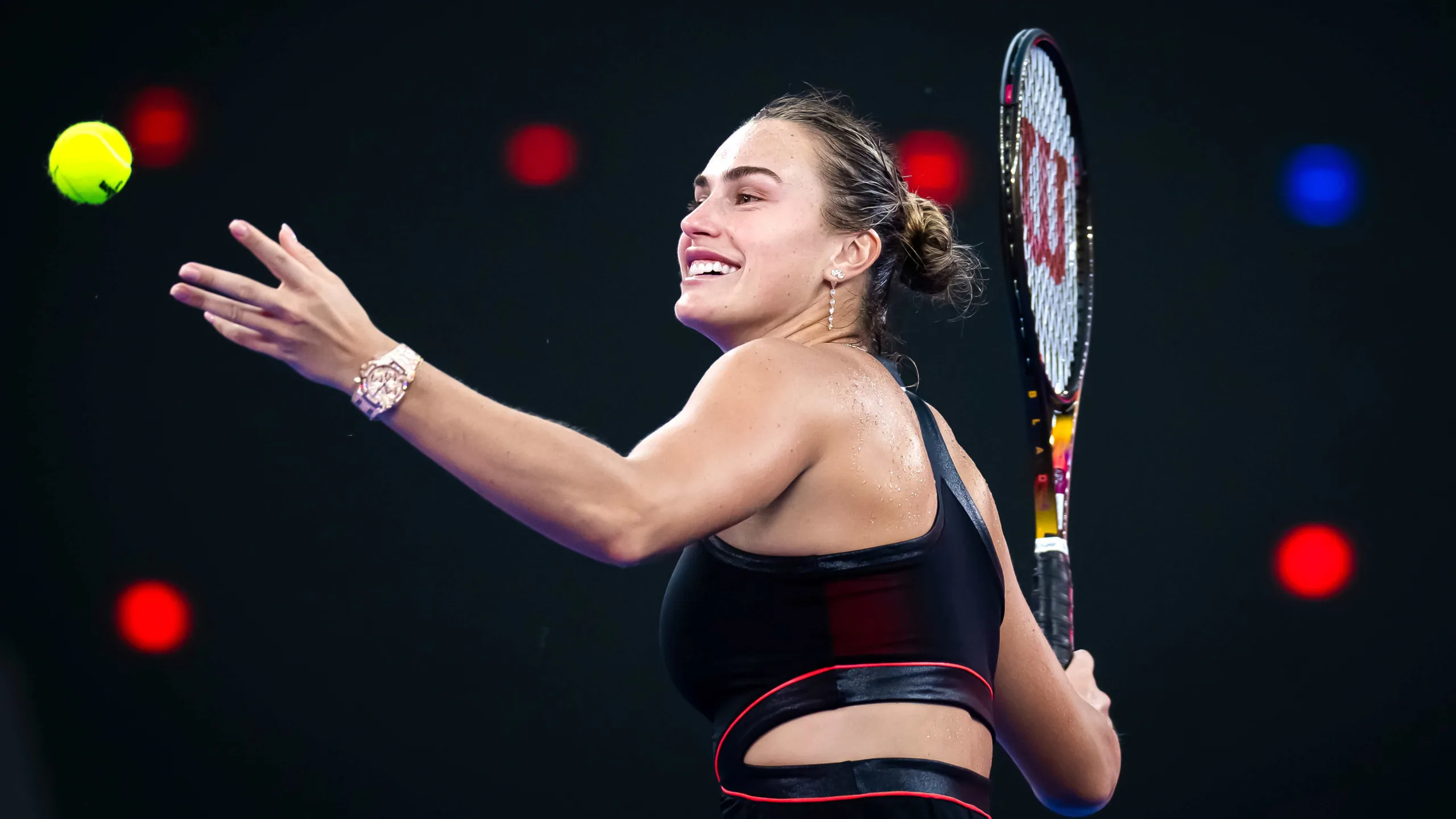
Aryna Sabalenka has secured the 2025 year-end WTA No. 1 ranking, regardless of her result at the WTA Finals in Riyadh. Having finished 2024 at No. 1 as well, she becomes the 13th woman in WTA rankings history to end consecutive seasons at the top.
Sabalenka’s 2025 campaign combined peak moments with relentless consistency. She captured four titles, including the fourth Grand Slam title of her career at the US Open. She also reached four additional finals, among them two major finals at the Australian Open and Roland Garros.
Her form across the season was remarkably steady. Sabalenka advanced to the quarterfinals or better at 13 of the 15 tournaments she played, a run that underpinned her hold on the top ranking from the opening week through the close of the year.
That uninterrupted stretch at No. 1 places her in an even smaller group. She is the seventh player in WTA rankings history to hold the No. 1 ranking for every week of a calendar year, and only the third woman to do so this century, after Serena Williams and Ashleigh Barty, who achieved the feat twice each.
The combination of Grand Slam success, four titles, multiple major finals and near-constant deep runs made Sabalenka the season’s defining player. Securing the year-end No. 1 spot for a second straight year confirms a period of sustained excellence and adds a notable chapter to WTA history.
Whatever unfolds at the WTA Finals, the statistical and historical landmarks of Sabalenka’s season are already established. She finishes 2025 as the sport’s year-end No. 1, with a set of achievements that underline both peak performance and remarkable consistency.
ATP Grand Slam Roland Garros
Books on Alcaraz and Sinner Clarify a New Chapter in Men’s Tennis
Two books on Alcaraz and Sinner illuminate how their rivalry reshaped men’s tennis in 2024–25. Today
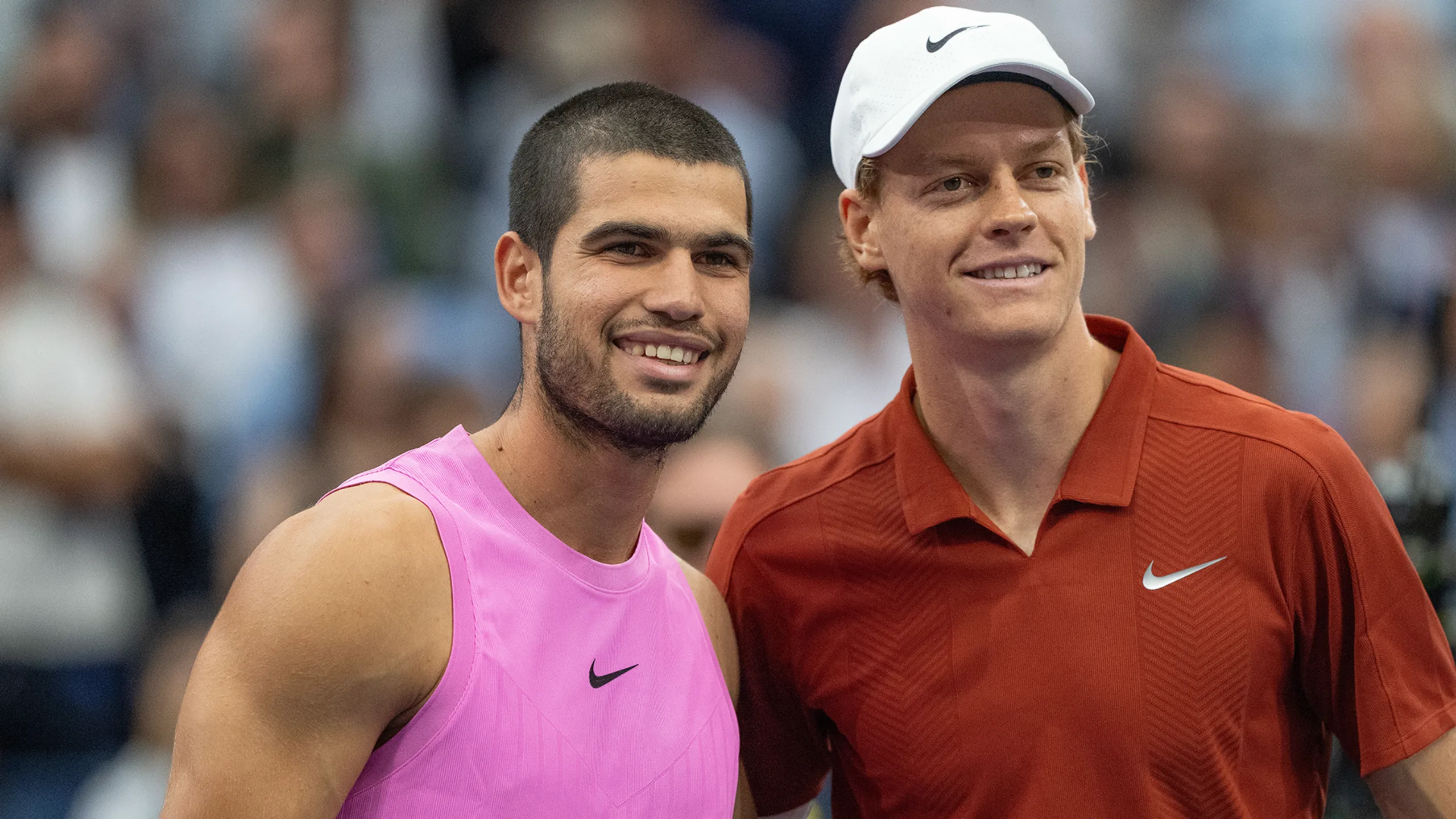
Two recent books arrive at a pivotal moment in men’s tennis, documenting the rapid ascent of Carlos Alcaraz and Jannik Sinner and the rivalry that has defined 2024 and 2025. Mark Hodgkinson’s Being Carlos Alcaraz supplies the biographical detail and environment that shaped Alcaraz, while Giri Nathan’s Changeover examines the rivalry and the broader cultural moment that surrounds it.
Hodgkinson traces Alcaraz from El Palmar to Juan Carlos Ferrero’s academy in Alicante, and highlights formative episodes: the five-year-old who “loved to bash the ball against the backboard” and a lockdown stint at the academy that accelerated his progress. The book also describes Alcaraz’s psychological training. “When they spoke on Mondays, Alcaraz wasn’t allowed to tell Cutillas whether he had won or lost his latest match, only how he thought he had played,” Hodgkinson writes. “Giving attention to the result would have reduced Alcaraz’s tennis to winning or losing, to being a success or a failure, and Cutillas didn’t want that for him.” Hodgkinson adds, “Cutillas was hoping that as a boy, and maybe deeper into his tennis life, he would be less interested in his results than in whether he was improving and meeting the standards he was setting for himself.”
Nathan’s Changeover is more literary and frames the players within the modern rivalry narrative. He writes that Alcaraz’s game “combined so many traits that didn’t belong together into a single psychedelic point.” Nathan also offers a vivid aside describing Daniil Medvedev as “the expansive plane of his forehead, those cunning beady eyes, the physiognomy of a supervillain plotting to take down the power grid.”
Both books contrast the two men’s temperaments and origins. Sinner’s upbringing in Sexten and his late shift from skiing to tennis are presented alongside anecdotes about his planning and precision, including the moment he told his coach “to stay f-ing calmer” and then dismissed him. Sinner called it “very, very strange” to come from a skiing village and become a tennis player.
Together the books explain how these players rose out of a long era of stasis at the top and set expectations for what the next phase of men’s tennis might look like.
ATP Grand Slam US Open
Facundo Bagnis begins voluntary provisional suspension after positive test
Facundo Bagnis accepts provisional suspension after positive test for hydrochlorothiazide in August..
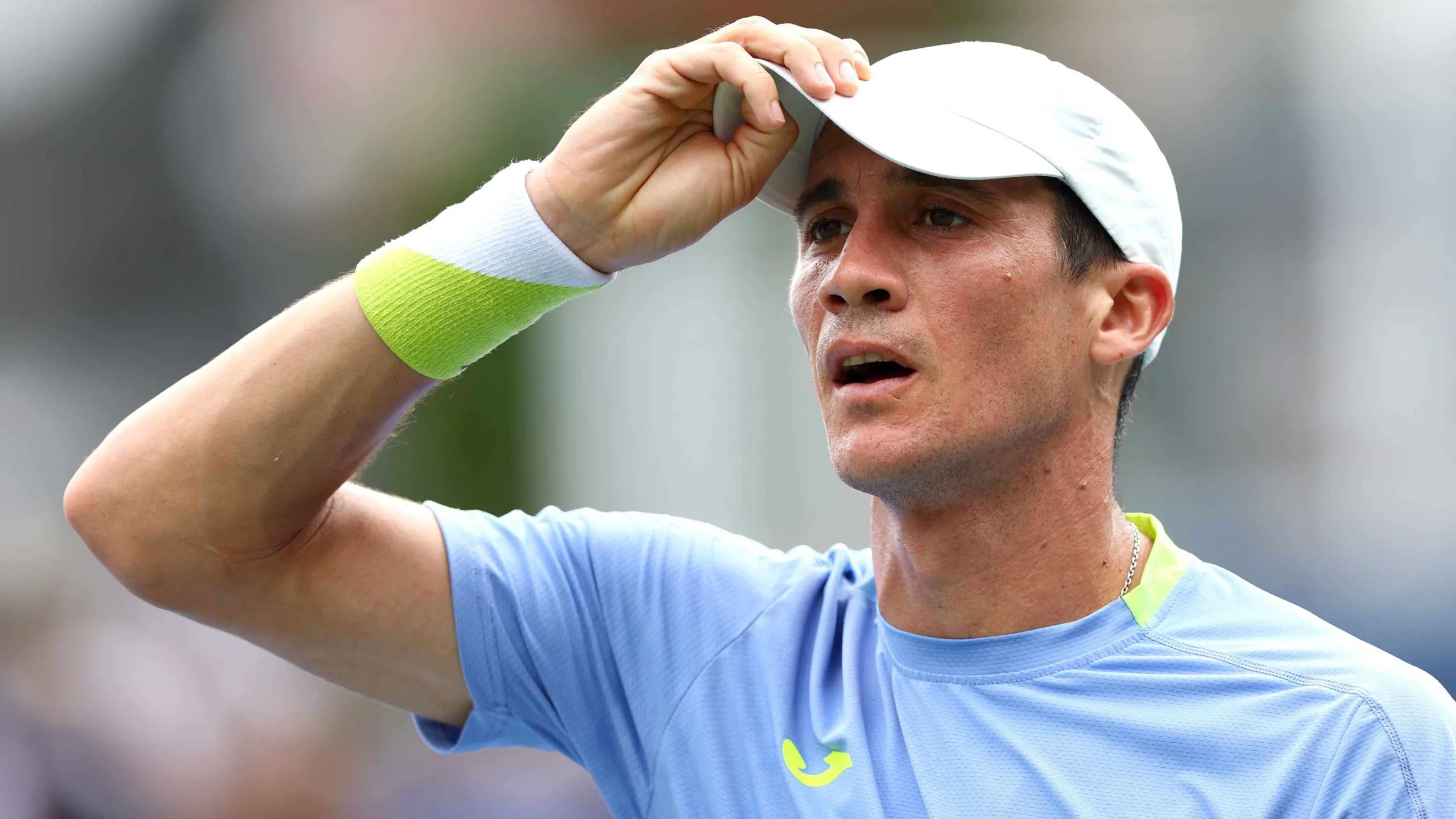
Facundo Bagnis has begun a voluntary provisional suspension after testing positive for hydrochlorothiazide, the International Tennis Integrity Agency announced. The 35-year-old Argentine’s positive result came during qualifying at the US Open in August, and the ITIA classified the substance in the category of diuretics and masking agents.
Bagnis lost in the first round of US Open qualifying, a defeat that was his sixth consecutive loss in Grand Slam qualifying matches. He reached a career-high ranking of No. 55 in 2016.
The player was notified of the test result this month and opted to start a provisional suspension last week. The ITIA process allows a provisional suspension to be credited as time served if a later ban is imposed.
In a social media statement, Bagnis denied knowingly taking any banned substance and said he has assembled legal and medical support to pursue a possible cross-contamination defense. He wrote: “I want to be clear, I’ve never knowingly taken anything prohibited, that’s why I’m confident in my innocence and that the truth will come to light and reveal a fair outcome,” Bagnis wrote on Instagram , calling the situation ‘one of the worst moments of my professional career.’
“The news has taken me completely by surprise,” he added. “Since the beginning, I have cooperated with the ITIA and been completely and totally transparent in order to clear everything up as quickly as possible.
“Additionally, I have chosen to accept a voluntary provisional suspension in order to dedicate my full attention to this process and to demonstrate that I have nothing to hide.”
Bagnis said he is working with a team that includes lawyers and a medical toxicologist as he prepares his response to the ITIA. The agency’s announcement confirmed the substance and the provisional suspension but did not detail the next steps in the investigation.
-

 Analytics & StatsATPUS Open2 months ago
Analytics & StatsATPUS Open2 months agoSinner: Predictability Cost Me in US Open Final as Cahill Reveals Djokovic’s Counsel
-

 Analytics & StatsUS OpenWTA2 months ago
Analytics & StatsUS OpenWTA2 months agoAfter the US Open: Six WTA takeaways from the 2025 tournament
-

 Analytics & StatsFinalsWTA2 months ago
Analytics & StatsFinalsWTA2 months agoCan Iga Swiatek Overturn Aryna Sabalenka for 2025 Year-End No 1?


